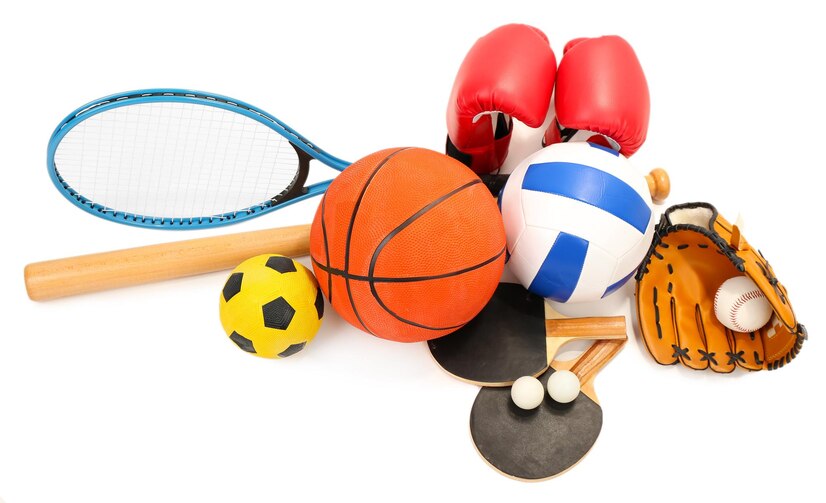Evolution of Sports Equipment: From Ancient Times to Modern Innovations
Sports equipment holds a crucial role in the world of athletics, facilitating performance, safety, and the overall enjoyment of various sports. The evolution of sports equipment throughout history reflects the advancements in human ingenuity, technology, and societal changes. This article aims to delve into the fascinating journey of sports equipment, tracing its development from ancient times to modern innovations.
By exploring the transformation of equipment used in sports, we can gain valuable insights into how sporting activities have evolved over time. Understanding the progression of sports equipment enables us to appreciate its significance and the immense impact it has on sports and athletes today.
Technological Innovations in Sports Equipment
In the realm of sports, technological innovations have revolutionized the design, performance, and safety of sports equipment, empowering athletes to push their boundaries and achieve new heights of excellence. With the advent of the digital age, athletes and sports enthusiasts can stay updated on the latest technological advancements through platforms like athletesite.com, dedicated to providing insights and information on cutting-edge sports equipment.
One area of technological innovation in sports equipment is the introduction of advanced materials. Carbon fiber, for instance, has become a game-changer due to its lightweight yet incredibly strong properties, making it ideal for applications in sports like cycling, tennis, and skiing. It enhances equipment durability and performance while reducing weight, enabling athletes to achieve faster speeds and improved maneuverability.
Moreover, advancements in design and engineering have led to the integration of smart technology into sports equipment. Sensors, accelerometers, and GPS trackers embedded in equipment collect data on metrics such as speed, impact force, and technique. Athletes can analyze this data to fine-tune their performance, identify areas for improvement, and reduce the risk of injury.
Ancient Sports Equipment
In ancient civilizations, sports played a significant role in the physical development, entertainment, and social cohesion of societies. The sports equipment used during this period varied across different cultures and regions, reflecting the specific needs and traditions of each civilization.
In ancient Greece, renowned for its emphasis on physical prowess and athletic competitions, sports equipment played a vital role in various events. Discus throwing required athletes to use heavy circular discs made of stone, while javelin throwing involved the use of long spears. Boxing, a popular sport, relied on the use of leather hand straps known as “cestus” to protect and enhance punches.
In ancient Rome, chariot racing was a thrilling spectacle, and specialized chariots and elaborate harnesses were essential components of the sport. Gladiatorial combat, a brutal form of entertainment, involved the use of various weapons and protective gear such as helmets, shields, and body armor.
Ancient sports equipment was often crafted from natural materials such as wood, stone, leather, and animal bones. While less sophisticated than their modern counterparts, these early sports equipment exemplified the ingenuity and resourcefulness of ancient societies in developing tools for athletic activities. The legacy of ancient sports equipment can still be seen in some modern sports, demonstrating the enduring impact of these early innovations.
Medieval and Renaissance Era
The medieval and Renaissance eras marked a significant transition in the world of sports and sports equipment. During this period, sports became intertwined with the culture of chivalry, courtly life, and artistic expression, leading to advancements in equipment that catered to both practical and aesthetic needs.
In medieval Europe, tournaments and jousting tournaments gained immense popularity. Knights participating in these events required specialized sports equipment for combat and protection. They wore suits of armor, including helmets, breastplates, gauntlets, and greaves, crafted from iron or steel. The jousting competitions necessitated lances designed for the sport, with blunted tips and reinforced shafts to ensure safety while still providing an exciting spectacle.
Archery also played a vital role during this era. Longbows made from sturdy yew wood were highly valued for their power and accuracy. Archers used finger tabs or leather gloves to protect their fingers while drawing the bowstring, allowing for better control and accuracy in shooting.
The medieval and Renaissance eras brought about advancements in sports equipment that reflected the societal and cultural values of the time. The emphasis on protection, craftsmanship, and aesthetics laid the groundwork for future innovations in sports equipment, setting the stage for the evolution of sporting culture in the centuries to come.
Industrial Revolution and the Rise of Modern Sports
The Industrial Revolution of the 18th and 19th centuries had a profound impact on sports and the development of modern sports equipment. The technological advancements and mass production capabilities brought about by the Industrial Revolution transformed sports from recreational pastimes to organized competitions.
During this period, standardized sports equipment began to emerge. In cricket, for example, wooden bats became standardized in size and shape, allowing for consistent gameplay. Baseball also saw the introduction of standardized gloves, improving fielding abilities and enhancing the sport’s strategy.
The Industrial Revolution also led to the creation of new sports and corresponding equipment. The invention of the bicycle revolutionized transportation and gave birth to cycling as a popular sport. This brought about the development of lightweight, durable bicycles with pneumatic tires, enabling faster speeds and increased maneuverability.
The Industrial Revolution played a pivotal role in shaping modern sports and the equipment associated with them. The advancements in production methods, standardization, and accessibility brought about by this era laid the foundation for the continued evolution of sports and sports equipment into the modern age.
Future Trends in Sports Equipment
The future of sports equipment holds exciting possibilities as technology continues to advance. Emerging trends suggest that sports equipment will integrate even more seamlessly with the athlete’s performance and safety. Smart technology is expected to play a significant role, with equipment embedded with sensors, artificial intelligence, and connectivity capabilities.
This will enable real-time performance monitoring, personalized training programs, and injury prevention strategies. Sustainability will also be a focus, with eco-friendly materials and manufacturing processes gaining prominence. Customization and personalization options will become more accessible, allowing athletes to tailor their equipment to their unique preferences and needs. The future of sports equipment promises to enhance performance, optimize safety, and offer a personalized and sustainable sporting experience.
Summary
The evolution of sports equipment from ancient times to modern innovations reveals a captivating journey of human ingenuity, technological advancements, and cultural transformations. Throughout history, sports equipment has played a vital role in enhancing performance, ensuring safety, and enriching the overall sporting experience.
From the ancient civilizations that crafted rudimentary yet functional equipment to the medieval and Renaissance eras that saw the rise of specialized gear, each era contributed to the development of sports equipment as we know it today. The Industrial Revolution paved the way for standardized equipment and increased accessibility, while the digital age brought forth smart technology and personalized options.
As we look to the future, sports equipment is set to become even more integrated with technology, enabling real-time performance analysis and personalized training. Sustainability will take center stage, with eco-friendly materials and manufacturing practices shaping the industry.


















